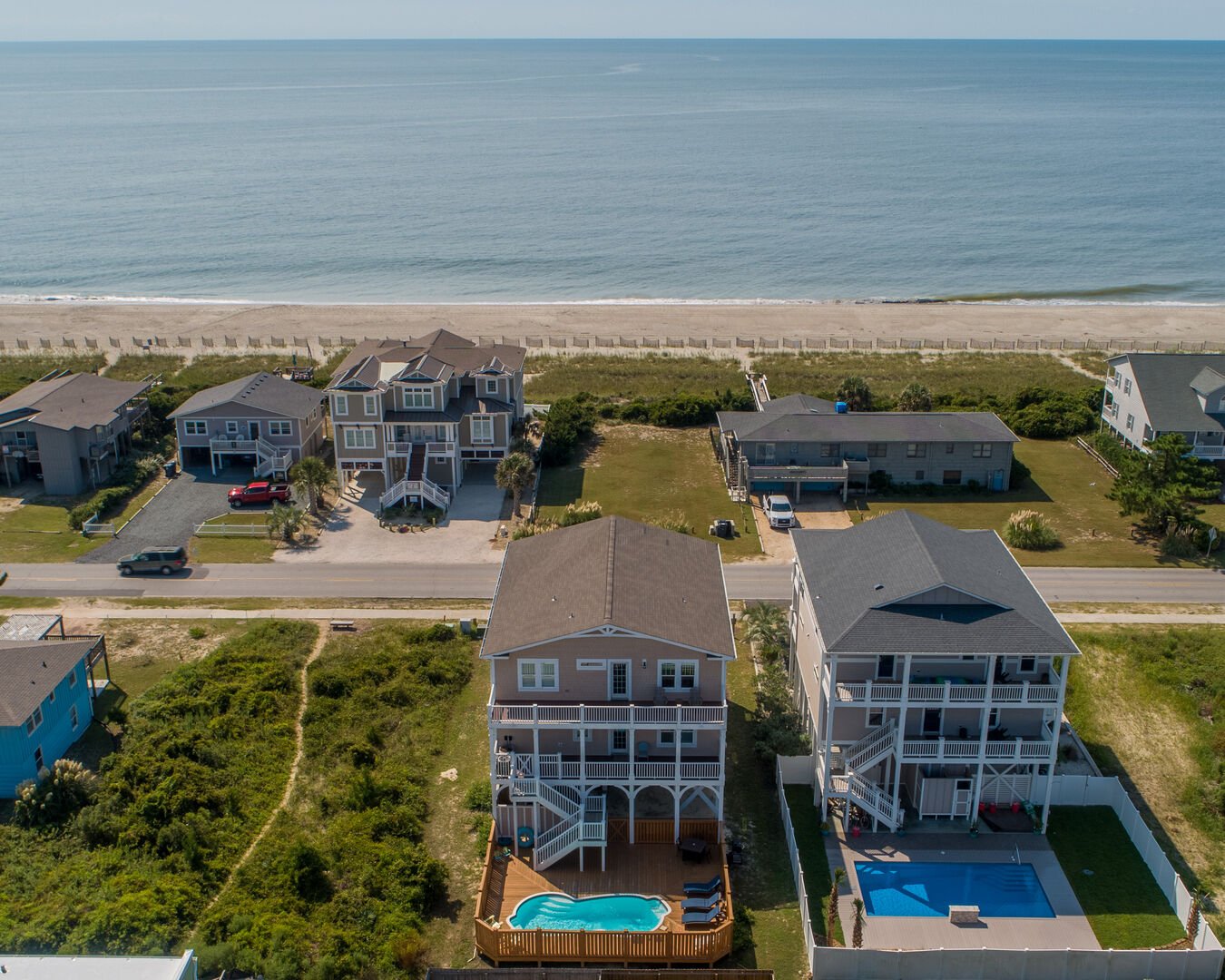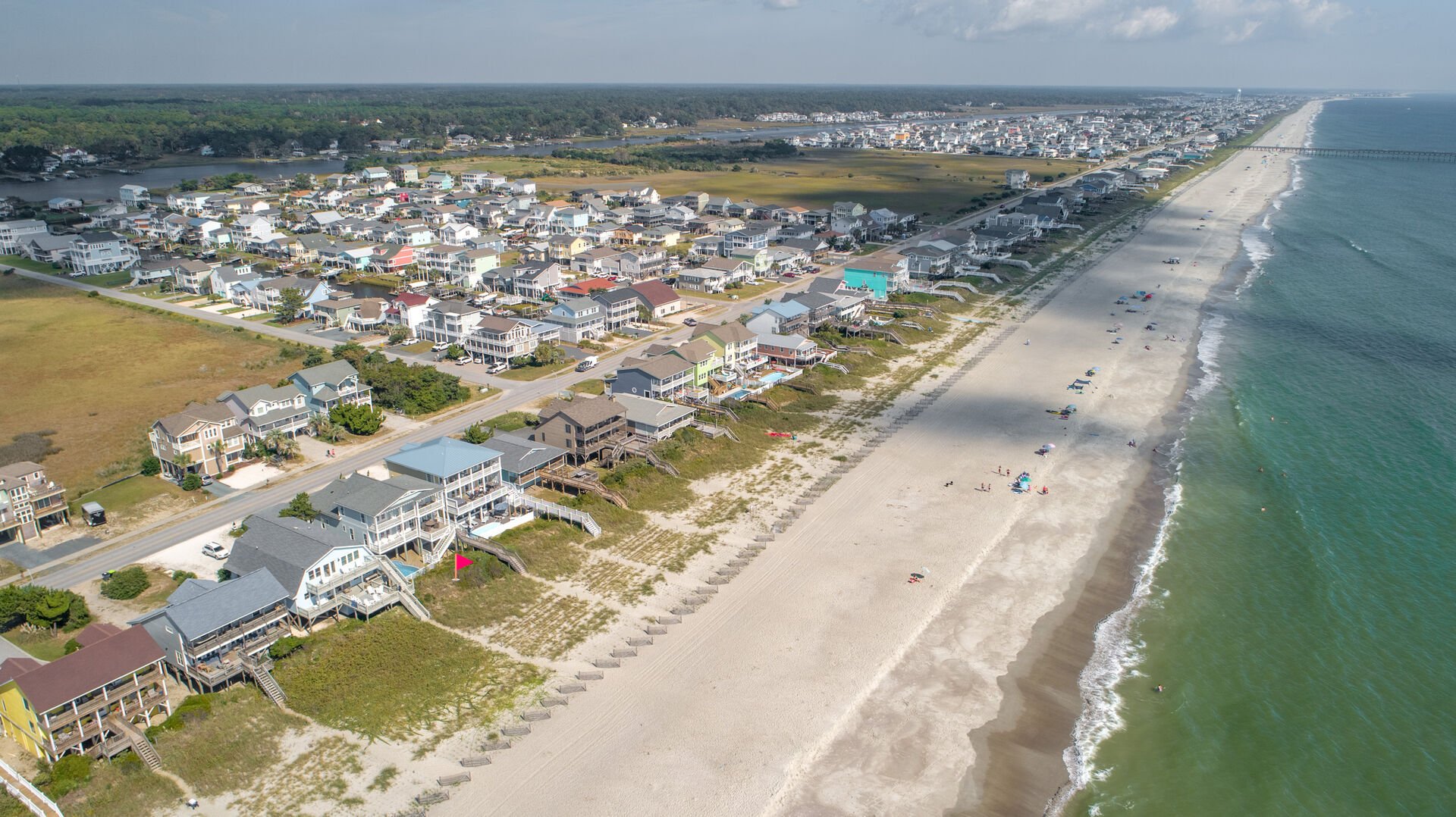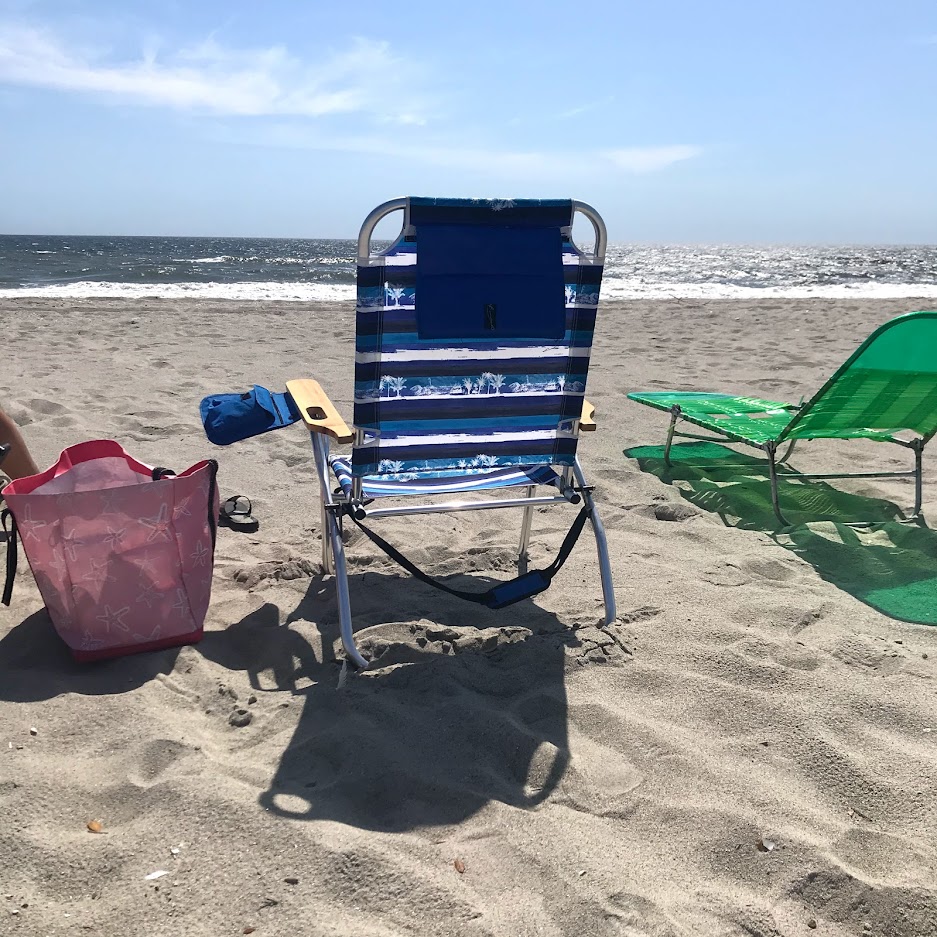We know you love visiting Holden Beach and relaxing with your toes in the sand, but have you ever wondered why the eight miles of sandy shore on Holden Beach is white?
Sand found on beaches throughout the world varies in color and texture. Colors of sand can range from white to brown to black, while texture ranges from fine and powdery to coarse or rocky.
Here on the beaches of North Carolina, the sand is fine, white, and perfect for enjoying a variety of beach activities including fishing, watersports, boating, beach games, and more.

Sand on North Carolina Beaches
Sand contains tiny bits of rocks and minerals, which can be any number of colors. The sand in North Carolina is white because of the type of rocks found here. A large component of the sand is quartz, a hard mineral that is white or pale in color and is found in granite and other types of rocks. Sand forms when these rocks and skeletal remains break down due to weathering processes including natural forces, gravity, wind, and water - to name a few.
Holden Beach sand also contains a significant amount of feldspar and other minerals, which give it a slightly pinkish hue. When the sun heats the sand, the quartz reflects the light and creates a white sand appearance.
Sand also contains a variety of skeletal remains of once-living organisms. If you look closely at the sand on Holden Beach, you will notice some broken pieces of mollusk shells from species like clams, oysters, and mussels. You may also see fragments of coral and other types of shell remains. Basically, anything you might find during your Holden Beach beachcombing adventures is also likely to exist in particle form within the sand. Storm seasons and tide levels may also cause the contents of the sand to vary.

Sand Around the World
There are beaches throughout the world with sand of different colors and textures. Hawaii has black sand beaches containing lava rock that has eroded over time. The sand in the Sahara Desert is fine and powdery, while the sand in Australia is often red or orange due to a high content of iron oxide.
A few other examples include: darker sand contains magnetite, pink sand contains corals with calcium carbonate, purple sand contains manganese garnet grains, and green sand contains a mineral called olivine.
What a marvelous variety of colors and types of sand that exist on beautiful beaches throughout the world!
Sea Oats
Sea oats are an attractive and important plant of the coastal community. A sea oat is a long-lived, slow growing, warm season, perennial grass commonly associated with the upper dunes along beach fronts. They grow mainly on the coast of the southern United States and are a critical component of the protection of our coastal sand dunes, beaches, and property here on Holden Beach from damaging wind, storm surge and tides. Learn more about sea oats here, including guidelines about how to treat them.

See You Soon
Next time you're at the beach, take a closer look at the sand. You might just be surprised by all the different colors and textures you can find in your travels.
If you are ready to get your toes in the white Holden Beach sand, book your Holden Beach vacation rental or call us at 1-800-655-3367 if we can answer any questions for you.
We hope to see you soon – at the beach!
**
Darcy Geho is a contributed to this Hobbs Realty blog. She spent 11 years working in the vacation rental industry while she lived on and traveled the North Carolina coast. Like most of our visitors, when Darcy isn’t on Holden Beach, she looks forward to her next visit.
